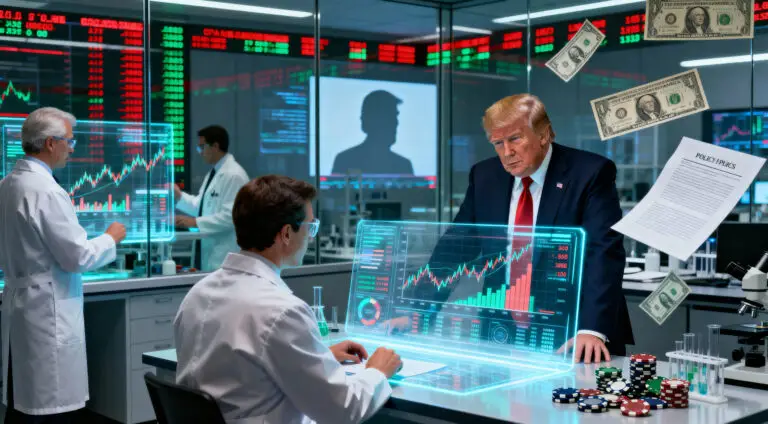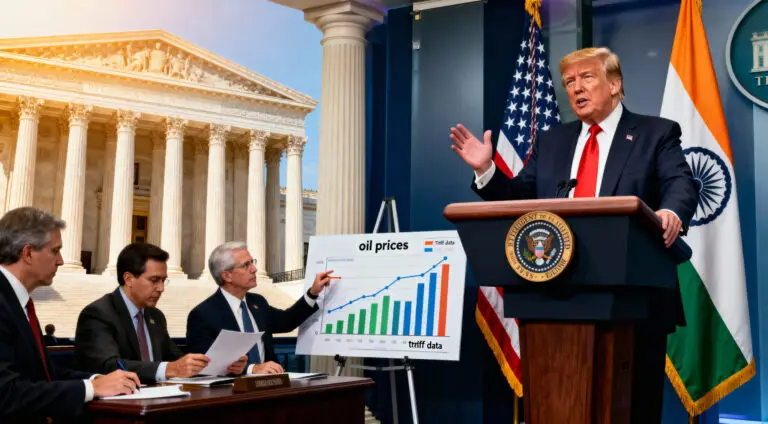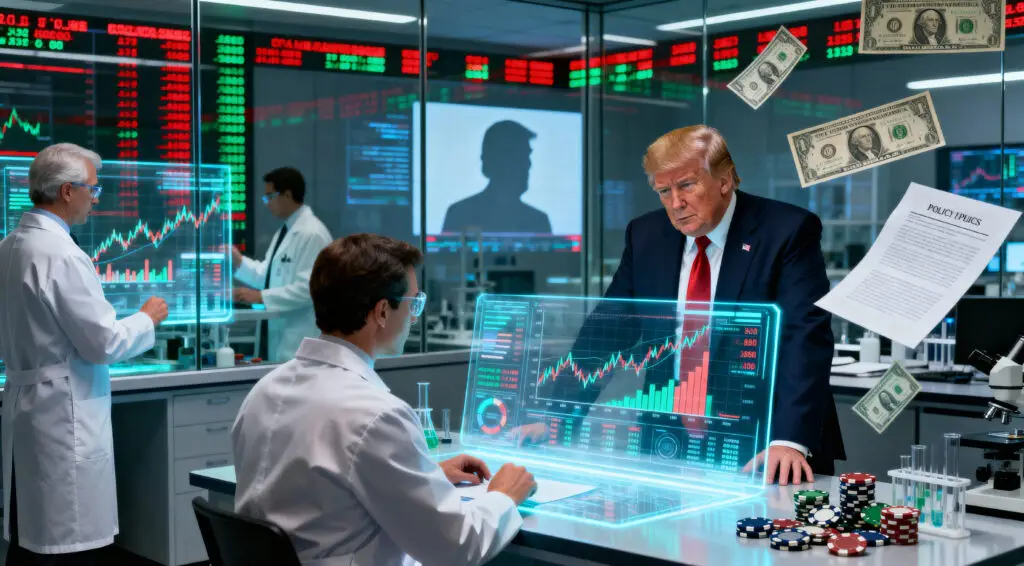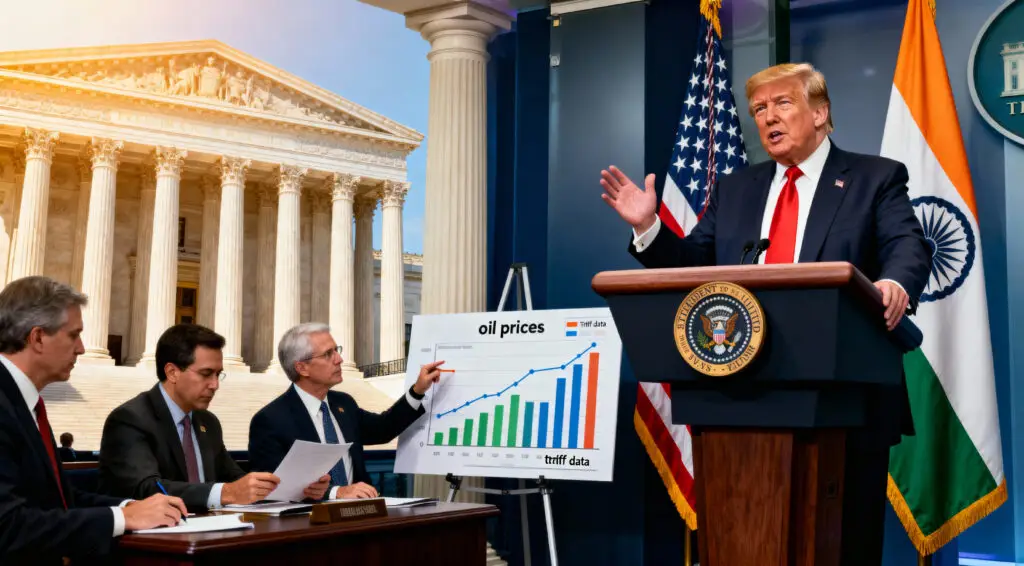In the first week of April, data published by the U.S. Bureau of Economic Analysis (BEA) reported that the Federal Reserve’s primary measure of inflation—the Personal Consumption Expenditures (PCE) price index—had increased by 2.3% compared to last year’s figures. Although this was lower than February’s 2.7% increase, the index was higher than economists’ forecasts, which predicted a 2.2% increase. As derived from the source, the surge in inflation data comes along the backdrop of increased political uncertainty surrounding the Trump administration’s policies, which, in turn, has fueled market volatility.
Details of the March Inflation Reading
The report also provided details on the Core PCE index, which excludes the more volatile food and energy categories. It noted the Core PCE fell to 2.6% in March, which was aligned with the expectations from economists. Economists expected the overall PCE index would decelerate in March, primarily because of a drop in energy prices due to recession fears, which allegedly put pressure on the price of oil. Regarding energy costs, their expectations proved true, as the cost of energy goods and related services declined by 2.7% during the month. On the other hand, not every segment was able to contribute to the decline in prices; food prices recorded their highest increase in months, up 0.5% on February’s prices.
Consequences of Interest Rates and the Economy
The PCE Index has a monthly publication frequency and is believed to influence the interest rate decisions of the Federal Reserve Board significantly. The central bank’s decision has been not to further lower rates this year, after having lowered them by 50 basis points in September 2024. In the case that the rates are lowered later this year, this would improve overall economic activity by providing more favorable terms for borrowing throughout the economy. This scenario is likely to mitigate the strain on the labor market, which is trying to maintain equilibrium in the midst of constant disturbances from tariffs.
Policy Uncertainty Lingers
Although the cooling inflation rate has signaled the possibility of rate cuts, the concern for the market remains, capturing the attention of many. While President Trump has placed what seems to be an economic pause on tariffs for 90 days, the overall economic environment remains cloudy.
Along with tariffs, other policies being pursued by the administration, such as deporting immigrants in bulk and reducing salaries for federal employees, are pointed out as major contributors to the economic fog. Economic data that was released recently covered, in Trump’s words, the whole economic activity and bafflingly, the economic movement contracting for the first time in three years during the first quarter.
Crypto Market Reaction
The fear of a prolonged period of slow economic activity has led Bitcoin and several cryptocurrencies to react aggressively and plummet. Bitcoin’s value was reported to sit at over $95,000 at the beginning of the week, but it has since taken a major hit. In the last day alone, Bitcoin’s worth is reported to have decreased by 1.2 percent and dropped down to $93,776. Major altcoins have also suffered a tremendous loss through their stock on funds. Bitcoin’s timely companion, Ether, lost a staggering 2.8%; XRP, 5.9%; Solana (SOL), 3.7%; and Binance Coin, 0.9%. All of these drops showcase the market’s sentiment toward the policy and economy as a whole.
Rate Cut Concerns and Increased Market Volatility
Cooling inflation and low core PCE figures may force the Federal Reserve into making rate cuts. It is important to note that financial markets experience a surge in volatility when rate cuts are made, although such rate changes can result in lower prices of risk assets like Bitcoin. This rise in prices is often attributed to eased liquidity conditions in the market as well as increased investor appetite for risk due to cheaper access to credit and relaxed monetary policies.
Pessimism Fading with Activity
While price action does not seem to favor a rally anytime soon, experts expect Bitcoin will undergo considerable positive price movement soon. Additionally, Bitcoin’s latest surge above $95,000 has boosted expectations around the crypto. Due to heightened appreciation from institutions, greater market participation from retail investors, and an overall healthy market atmosphere towards the crypto, Bitcoin is reportedly gaining traction.
Price Targets and Alterations to Investment Strategies
In a report from April 2025, Kendrick’s team is quoted to say that Bitcoin will hit $120,000 in the second quarter of 2025 and a further increase to $200,000 by the end of that year. These quotes come from a report published by Standard Chartered’s Kendrick and his crypto research team. Claiming Bitcoin withdrawal from stimulated inflation in bonds and stocks, Kendrick asserted that this investment trend is likely to foment a colossal price increase this spring. A growing trend of reallocation into the spot Bitcoin market is noted as an additional pivotal reason that could facilitate a bullish Bitcoin rally.















